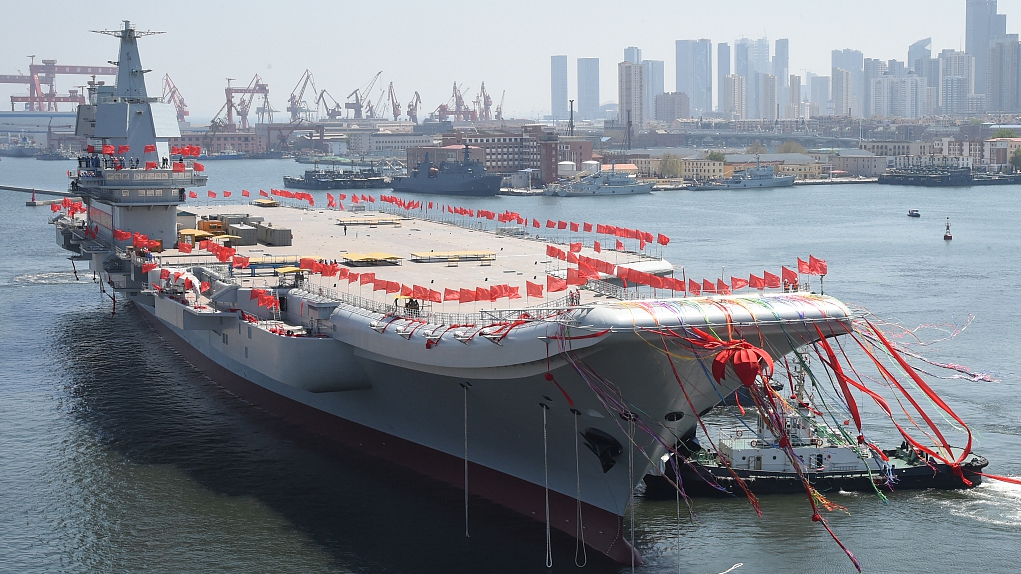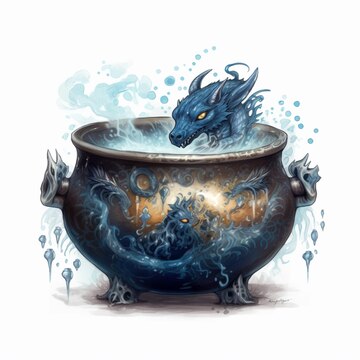The WDMMA (World Directory of Modern Military Aircraft) annual ranking utilises a formula that considers values related to the total fighting strength of the various air services of the world. The formula produces the ‘TrueValueRating’ (TvR).
It evaluates the strength of the nation’s airpower based on – not only overall strength – but also modernisation, logistical support, attack and defence capabilities and so on. In this way, power is not simply assessed on its total quantity of aircraft but rather its quality and general inventory mix.
Greater weightage is given to categories generally overlooked by some powers, namely special-mission, dedicated bomber force, CAS, training, and on-order units. Beyond this is a focus on local aero-industry capabilities, inventory balance (general mix of unit types), and force experience.
TvR remains, however, a work-in-progress and is constantly evaluated as needed.
The current WDMMA inventory consists of 103 air services covered (this includes Army, Navy, and Marine branches of service where applicable), and 48,082 total aircraft followed.
Statistical Analysis
USA. The highest attainable TvR score is 242.9 held by the United States Air Force (USAF). The USAF features a broad mix of aircraft types as well as a balanced strength. Many of its products are locally- sourced thanks to the U.S.’s massive industrial base. It also maintains dedicated strategic-level bombers, CAS aircraft, a sizeable helicopter fleet and fighter force (of which many are multirole types), and hundreds of transport aircraft to reach anywhere in the world. Beyond this is a large training, tanker, and special-mission force. The service is also set to be reinforced shortly with hundreds of units still on order.
Four out of the first five positions are of US forces- 1st United States Air Force (5,189) TvR: 242.9, 2nd United States Navy (2,626) TvR: 142.4, 4th United States Army Aviation (4,397) TvR: 112.6 and 5th United States Marine Corps (1,211) TvR: 85.3.
-
- The Total added TvR of the USA at 583.2 is almost 3.5 times the total TvR of the next closest country Russia.
-
- The total TvR of the USA is equal to the combined TvR of the next ten countries.
-
- US assets seem to be very high in numbers but are deployed around the globe.
Russia. Russian Air Force with a TvR of 114.2 is at 3rd position after USAF and USN. The total TvR of Russia (AF and Navy Combined) is 157.8.
-
- Russian air power is still a formidable force (Ukraine war propaganda notwithstanding).
China. At 7th place is PLA Air Force (2,084) TvR: 63.8, 15th place is PLA Naval Air Force (436) TvR: 42.4 and the total TvR is 106.2.
Pakistan. 18th position Pakistan Air Force (818) TvR: 46.3.
India. Indian Air Force (1,645) is in 4th position with a TvR of 69.4, Indian Naval Aviation (232) with a TvR: of 41.2 is in 28th position and Indian Army Aviation (195) at 37th place with a TvR: 30.0.
-
- The combined TvR is 140.6, which is one-fourth of that of the USA.
-
- IAF is marginally ahead of PLAAF by 5.6 points.
-
- Numerically China is way ahead and is rapidly adding more and more aircraft to its inventory.
Complete List
(Number of aircraft in brackets)
-
-
- United States Air Force (5,189) TvR: 242.9
- United States Navy (2,626) TvR: 142.4
- Russian Air Force (3,652) TvR: 114.2
- United States Army Aviation (4,397) TvR: 112.6
- United States Marine Corps (1,211) TvR: 85.3
- Indian Air Force (1,645) TvR: 69.4
- People’s Liberation Army Air Force (2,084) TvR: 63.8
- Japan Air Self-Defense Force (779) TvR: 58.1
- Israeli Air Force (581) TvR: 58.0
- French Air Force (501) TvR: 56.3
- British Royal Air Force (466) TvR: 55.3
- South Korean Air Force (890) TvR: 53.4
- Italian Air Force (506) TvR: 51.9
- Royal Australian Air Force (296) TvR: 51.7
- People’s Liberation Army Naval Air Force (436) TvR: 49.3
- Brazilian Air Force (527) TvR: 48.3
- Royal Saudi Air Force (702) TvR: 46.4
- Pakistan Air Force (818) TvR: 46.3
- German Air Force (394) TvR: 46.2
- French Navy Aviation (196) TvR: 45.9
- Turkish Air Force (618) TvR: 44.6
- Egyptian Air Force (1,122) TvR: 44.0
- Russian Naval Aviation (384) TvR: 43.6
- Algerian Air Force (541) TvR: 43.2
- People’s Liberation Naval Air Force (436) TvR: 42.4
- Spanish Air Force (393) TvR: 41.6
- Royal Canadian Air Force (378) TvR: 41.3
- Indian Naval Aviation (232) TvR: 41.2
- Indonesian Air Force (254) TvR: 40.0
- Swedish Air Force (152) TvR: 38.6
- Ukrainian Air Force (271) TvR: 36.3
- United Arab Emirates Air Force (335) TvR: 33.1
- Republic of China Air Force (518) TvR: 33.0
- Turkish Army Aviation (392) TvR: 32.4
- Republic of Singapore Air Force (247) TvR: 32.1
- People’s Liberation Army Ground Force (857) TvR: 31.3
- Indian Army Aviation (195) TvR: 30.0
- Chilean Air Force (207) TvR: 27.9
- Argentine Air Force (150) TvR: 27.4
- Royal Jordanian Air Force (278) TvR: 27.3
- Peruvian Air Force (187) TvR: 27.1
- Colombian Air Force (296) TvR: 27.0
- Islamic Republic of Iran Air Force (343) TvR: 25.8
- Korean People’s Army Air Force (North Korea) (951) TvR: 24.8
- German Army Aviation (264) TvR: 24.5
- Royal Norwegian Air Force (110) TvR: 24.3
- Republic of Korea Navy (South Korea) (77) TvR: 24.3
- Hellenic Air Force (372) TvR: 24.2
- Serbian Air Force (109) TvR: 24.0
- South African Air Force (228) TvR: 23.8
- Royal Thai Air Force (230) TvR: 23 2
- Polish Air Force (275) TvR: 22.8
- Spanish Army Aviation (95) TvR: 21.4
- Kazakh Air Defense Forces (235) TvR: 21.1
- Venezuelan Air Force (183) TvR: 20.8
- Australia Naval Aviation (44) TvR: 20.5
- Royal Navy Fleet Air Arm (108) TvR: 20.2
- Italian Army Aviation (256) TvR: 19.6
- Philippine Air Force (169) TvR: 19.2
- Portuguese Air Force (104)
- Italian Navy (113) TvR: 18.9
- Royal Malaysian Air Force (176) TvR: 18.8
- Royal Netherlands Air Force (171) TvR: 18.7
- Royal Danish Air Force (115) TvR: 18.6
- Romanian Air Force (140) TvR: 18.4
- Swiss Air Force (174) TvR: 18.1
- Vietnamese People’s Air Force (274) TvR: 18.0
- Nigerian Air Force (138) TvR: 17.9
- Royal Thai Army Aviation (284) TvR: 17.4
- Kuwait Air Force (87) TvR: 16.8
- Qatar Emiri Air Force (125) TvR: 16.4
- Kenya Air Force (150) TvR: 16.
- Belarus Air Force (201) TvR: 16.2
- Uzbekistan Air and Air Defence Forces (185) TvR: 16.
- Royal Air Force of Oman (133) TvR: 16.0
- Belgian Air Component (124) TvR: 15.6
- Bulgarian Air Force (65) TvR: 15.5
- German Navy Aviation (56) TvR: 15.4
- Australian Army Aviation (107) TvR: 14.4
- Slovak Air Force (47) TvR: 14.3
- Bangladesh Air Force (173) TvR: 14.1
- Armenian Air Force (51) TvR: 14.0
- Austrian Air Force (102) TvR: 13.8
- Hungarian Air Force (48) TvR: 12.6
- Finnish Air Force (139) TvR: 12.5
- Azerbaijan Air Defence Force (149) TvR: 12.2
- Islamic Republic of Iran Army Aviation (78) TvR: 11.4
- Hellenic Army (217) TvR: 11.2
- Turkmen Air Force (101) TvR: 10.4
- Islamic Republic of Iran Navy Aviation (31) TvR: 9.8
- Bangladesh Army Aviation (13) TvR: 9.2
- Croatian Air Force (80) TvR: 9.0
- Ecuadorian Air Force (60) TvR: 8.8
- Ethiopian Air Force (82) TvR: 8.1
- Spanish Naval Aviation (55) TvR: 7.6
- Iraqi Air Force (189) TvR: 7.4
- Turkish Navy Aviation (45) TvR: 6.9
- Republic of China Army (201) TvR: 6.7
- Nagorno-Karabakh Army AF (12) TvR: 6.6
- Air Force Brigade of Bosnia and Herzegovina (19) TvR: 5.8
- Syrian Air Force (453) TvR: 5.5
- emen Arab Republic Air Force (169) TvR: 5.2
- Afghan Air Force (17) TvR: 5.0
-
-
-
Suggestions and value additions are most welcome
For regular updates, please register here:-
References and credits
Global airpower ranking 2024, https://www.wdmma.org/ranking.php
-
To all the online sites and channels.
Disclaimer:
Information and data included in the blog are for educational & non-commercial purposes only and have been carefully adapted, excerpted, or edited from sources deemed reliable and accurate. All copyrighted material belongs to respective owners and is provided only for purposes of wider dissemination.
-


